Portrait lens – Which One? 1-10
Portrait lenses 1-10
1.
I learned about this lens from Claire on DPReview forum (Marla2008). She is very talented photographer and has great blog at http://itsnotthecamera.wordpress.com/ .
Click here to see more images in the Flickr set.
Navitar 75/1.3 vignette on Sony NEX 5N,
but that vignetting add to its character. As far as I know, it doesn’t vignette on MFT. It is a TV lens and comes with C-mount. I have seen some reports about infinity focus problems, but my samples (3) seems to work OK. One of my samples was much cheaper because it doesn’t have Navitar signature – only TV lens and it has slightly different aperture blades. I haven’t noticed difference in the output image.
What’s good:
It’s a lens with the personality. It will isolate your subject on a very unique way, giving to your images, that little bit of extra touch. Considering that Canon EF 85/1.2 L USM II cost well above 1250 USD, the price of this TV lens, starts to look more attractive. You should be able to find one for less then 250 USD, if you keep looking…
What’s not so good:
Build quality could be better. I mean it’s metal and glass, but doesn’t feel rock solid and focus ring is not the smoothest one.
There were some infinity focus problems reported, but that might be related to the adapter. It doesn’t have multi coating, so expect it to be prone to flare and ghosting. But hey, is that really bad?
Final word:
If you are not planning to switch on full frame soon, and if you like shallow DOF with a swirly bokeh, this is definitely lens to own.
2.
Jupiter is probably the cheapest alternative to more expensive Helios, CZJ Sonnar or Biotar lenses. It has similar characteristics like other Sonnar designs, with slightly less characteristic bokeh.
Click here to see more images in the Flickr set
What’s good:
Price considering it is Sonnar. It has typical soft but pleasing rendering wide open, typical for this lens design. Stop it down to f/2.8 or f/4 and it becomes very sharp in center, while bokeh is still rather smooth. There is slight tendency to make outlined circles in the highlights, which I like. There are silver or black versions, 9 or 15 aperture blades (maybe some other variants too), M42, LTM (m39), Contax/Kiev and some other mounts, that I never heard about, so you can pick whatever you like.
What’s not so good:
There is nothing wrong with Russian lenses, unless there is something wrong. Be careful when buying one, because it might work just fine another 50 years, or it can fall apart when you try to mount it on camera. Greenish cast is probably due to its age, and caused by old coatings, but ASAIK it hasn’t radioactive elements.
Final word:
This is full frame lens, and not very big or expensive one. If you would like to learn about Sonnar rendering, this lens is great entrance ticket. But it is probably my least favorite Sonnar of all. Not because it is bed, maybe just because it is too ordinary for my liking.
3.
This is the lens for connoisseurs and those who can appreciate the flavor of gentleness and kindness. It is perfect portrait lens if you are not after acne studies or wrinkle maps. But you have to a) like low contrast images, b) learn how to use it for your ideas.
Click here to see more images in the Flickr set
What’s good:
It was made in times, when craftsmanship and quality were attributes of honest business.
Beside all my raving, I can hardly recommend this lens. First of all it is slow. Second, to make an image that will stand out from the crowd with this lens, you need to carefully think it over and prepare. Low contrast, low resolution, washed colors. Are you ready to love any of those?
Ernst Leitz Wetzlar 9cm/4 is simply not all rounder, or lens for shooting your running toddlers and dogs. But it is not expensive, and believe me, it will make you feel better even if you just hold it for a few minutes here and there.
4.
I was pleasantly surprised with this lens. If it only wouldn’t have that “Ä” in the name, that I always suffer to find on my keyboard, I would be glad to write more about it 🙂 It’s a very nice portrait lens, if you are after punchy, juicy images, that are not Zeiss like over-sharpened, but still very sharp.
Click here to see more images in the Flickr set
What’s good:
Basically everything… There is not much to write about, for some 400 USD (used) you will get small, very well built lens, that deliver nice clean images even wide open. Bokeh is neutral, pleasing, smooth.
Stop it down a bit and you have very sharp landscape medium tele lens.
What’s not so good:
Nitpicking. Not razor sharp wide open (which is rather good in fact), it could be faster though. It might be just me, but I like those super fas monsters more. You might experience some purple fringing in the extreme contrast areas, and quite a bit of LoCa in the oof areas, but only on very bright surfaces.
Final word:
This is another full frame lens, quite small, very well built, for the price that won’t cost you arm and leg. If you are looking for good standard, and f/2.5 is fast enough, put it on top of your list.
5.
This is a good lens. Some people doesn’t like Canon’s FD system and build quality of Canon FDn(new) lenses. But FDn 85/1.8 still feels very solid and it deliver nice images even wide open. There is of course it’s more famous big brother – Canon FD 85 f/1.2 L or S.S.C / Aspherical. But they are in a different price league.
Click here to see more images in the Flickr set
What’s good:
This is fast lens. You might think that difference between f/1.8 and f/2.5 is negligible, but just take a brief look at Heliar above and Canon here. Look at Eiri, and look in which picture she stands out more from the background. Priced around 150-160 USD (for the lens in solid condition), it is very attractive alternative.
Be sure to buy the lens hood. It is not really flare resistant and I don’t like how it flares. Build quality, especially mount wise could be better, but hey, most of those lenses are already over 20 years in use and most are still fine.Final word:
Canon FD is a classic. If you have adapter, buy it. If not, buy it too if you get the good price. You won’t be disappointed, but there is little to rave about. Solid lens, good tele all rounder.6.
This is great value for money lens, even if it’s not the cheapest one. The lens render remarkable image, that pick the attention of observer. You might think that it is not really typical for the Sonnar, because it is very sharp wide open, but it is wide open at f/2.8 not at f/1.5 or f/2.
Click here to see more images in the Flickr set
What’s good:
It is affordable ticket to the high class performance. There are very few lenses at this focal length that will render sharper image with better contrast and those that are (like LEICA M 90mm f/2 aspherical APO-Summicron-M i.e.) cost significantly more. Contrast is great already wide open, build quality is solid, you can’t go wrong with this lens.
What’s not so good:
Focusing. Contax G 90/2.8 was designed as AF lens and it doesn’t have standard focus ring. That means that you need special adapters, and most of those are either expensive or not precise and pleasing to use. Even some expensive ones are rather fiddly. Recently there is electronic adapter, that allow AF on Sony E-mount cameras, AFAIK AF is very slow. I can recommend Metabones adapters, but they are very pricey 🙁
It is also slow lens for my liking (for portraiture).Final word:
Get this lens. Get good adapter. Enjoy photography at its best. On the other hand, once you get fed with all that contrast and sharpness and punchy colors, you might find some old hazy pal to be more pleasing. Maybe it’s just me…7.
My copy of Carl Zeiss Jena Sonnar 8,5cm2/ comes in early Kiev/Contax (I,II etc.) bayonet. You will need not so often Contax/Kiev to NEX bayonet or skills to DIY from the old Kiev camera and m39 adapter. Another option is to check for Exakta version.
Click here to see more images in the Flickr set
What’s good:
If you don’t like falsification, this lens is the original. It has very slightly cleaner and more refined look than its Russian (Jupiter-9) sibling. Color shift is not that significant and bokeh is more delicate. It is also better built, and it looks nicer too. This lens is capable of bringing some uniqueness in your images, but there are more special Sonnars on the market.
What’s not so good:
Mainly the price. As I wrote above, you can save lot of money with Jupiter-9, while giving just a little bit of its character. Bayonet Contax/Kiev is not the best to work with, but you can find also Exakta version.
Final word:
This lens is rather collectors item. It will certainly please you, but there are other – more reasonable options out there.
8.
This Leica is almost perfect portrait lens. Very well optically corrected, with good balance between smoothness and sharpness, it represent exceptional value among its peers.
Click here to see more images in the Flickr set
What’s good:
Image quality is exceptional without any significant flaws. It is like build quality and it has built in lens hood. In some ways, it is very similar to Contax G 90/2.8, but while Contax is somewhat brutal in rendering (extremely sharp and contrast), Leica is more subtle and refined. It is also much bigger pleasure to use.
What’s not so good:
It’s big and heavy and rather expensive in a good condition. But it is still one of the most affordable Leica lenses in this focal range, and I expect its price to go up with a new full frame mirror-less camera announcements.
If you went in the mirror-less system because of its compactness, this is not the lens for you. But if you don’t care, (the only small thing that really matter to me are taxes), it is great option and smart investment. You should feel that special tingling in the back, whenever you mount Leica lens on your camera.9.
Samyang 85/1.4 has very interesting mixture of characteristics. It is not the sharpest lens out there, but due to the great micro-contrast and punchy color rendering, it looks as sharp as you’ll ever need for portrait.
Click here to see more images in the Flickr set
What’s good:
Image quality! This lens is sharp more than enough, but the ability to isolate your subject is exceptional. Not only because it is fast lens, but because bokeh is simply outstanding. If you look really hard, you might see little outlining effect in circular highlights, but color and luminance transitions in the oof areas are silky smooth.
What’s not so good:
Build quality can be better, and the sharpness never reach highest figures, even if you stop it down to f/5.6 or f/8. It is really sharp enough, but it lacks that razor sharp definition like Contax G 90/2.8 i.e. While it works, the lens will let you cold as an object of desire. It is rather big and bulky on NEX body.
Final word:
If there will be something like value for the money, Samyang will win in the IQ department. If you are looking for f/1.4 or faster lens in this focal range, you wouldn’t find cheaper option for sure (except probably Navitar 75/1.3, but that is special effect lens. Samyang is standard lens with high IQ). Don’t think twice, go for it and enjoy the results.
10.
MOG Trioplan 100/2.8 is a legend. Not so rare as Biotar 75/1.5, but not always easy to find either. It has double personality – nice and smooth wide open, quite sharp and contrast just one stop later. It is famous for its characteristic bokeh.
Click here to see more images in the Flickr set
What’s good:
It’s one of those lenses that will give stamp of uniqueness to your images, especially if used wide open. Back-lit highlights in the background, such as dew drops in the morning or x-mass tree lights in the evening, will make tons of playful circles to run around. In that terms, this lens is vivid, it celebrate the life, but at the same time, it will help the skin to look smooth and gentle. Build quality is solid, not Leica like, but much better than Jupiter, or Samyang.
It’s rather slow at f/2.8, for my liking anyway. Once you try that 200mm f/2 beast, you can’t go back 🙁 While my sample is in a good condition, there are many with fungus or strong cleaning marks out there, so be careful when you buy it. You might also experience some mechanical problems, mainly oil on blades or stiff focusing, that needs re-lubrication.Final word:
This lens is among top ten lenses of my all time favorites, but it deserve to be understood and mastered. I am looking forward to spend more time with it. My sample is Exakta mount and it was some 25% cheaper than it’s M42 sibling. As there are good EXA/NEX adapters that doesn’t cost an arm and leg, you might want to save few bucks with EXA version. Links to the other parts of this test:Introduction to the test
11-20
(Helios 40-2 8,5cm/1.5, Carl Zeiss Jena Pancolar electric 80/1.8 MC, Takumar Super-Multi-Coated 85/1.8, Meyer-Optik Görlitz Orestor 100/2.8, Carl Zeiss Jena Biotar 7,5cm f/1.5, Carl Zeiss Jena Biometar 80/2.8, Meyer-Optik Görlitz Telefogar 90/3.5, Carl Zeiss Jena Tevidon 70/2.8, Carl Zeiss Jena Tevidon 100/2.8, Som Berthiot Tele-Cinor 75/2.5)
21-30
(Canon EF 85/1.2 L USM II, Minolta MC Rokkor – PF 85/1.7, Contarex – Carl Zeiss Sonnar 85/2, Nikon Nikkor AF-DC 105/2 D, Nikon Nikkor 105/1.8 Ai-S, Nikon Nikkor 85/1.4 Ai-S, Olympus OM-System Zuiko Auto-T 100/2.8, Nikon Nikkor 85/1.8 G AF-S, Canon EF 100/2.8 L IS USM Macro, Panagor Auto Macro PMC 90/2.8)
To help this page survive, your donation will be highly appreciated.
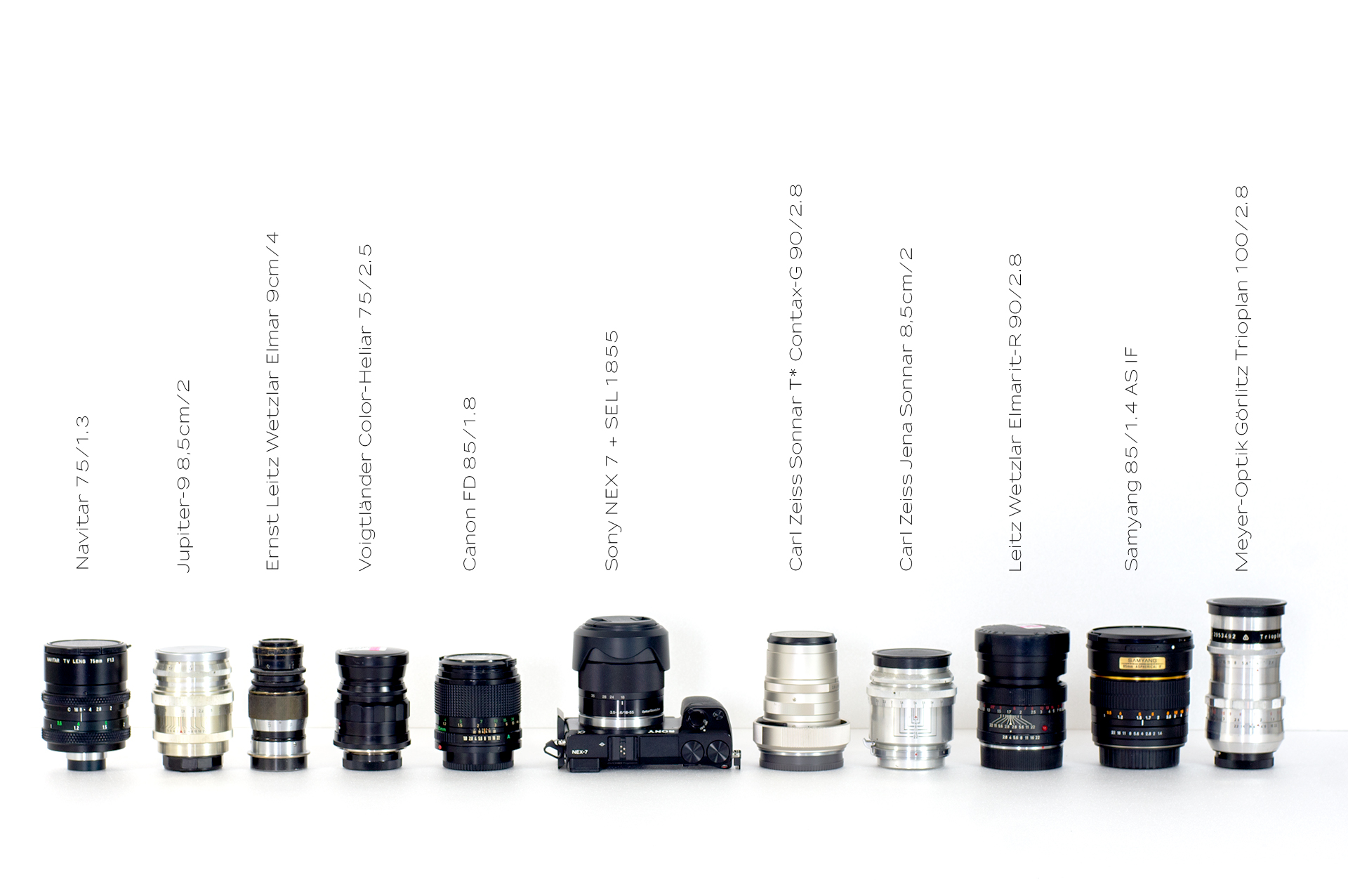
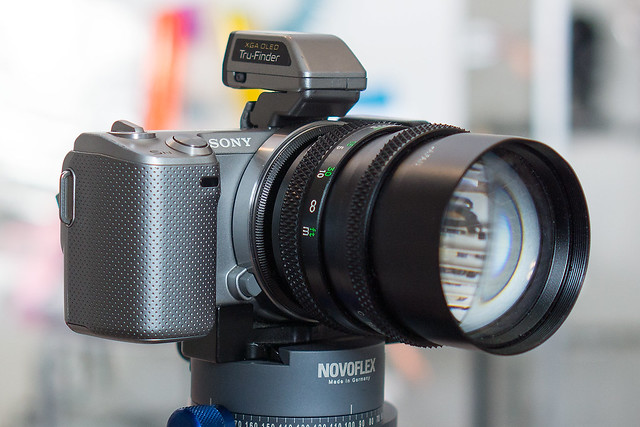

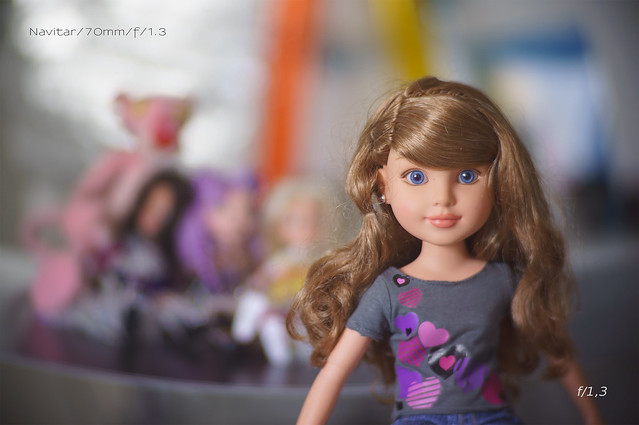

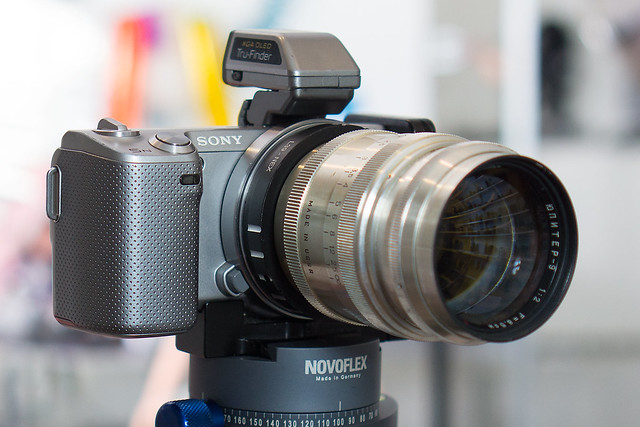


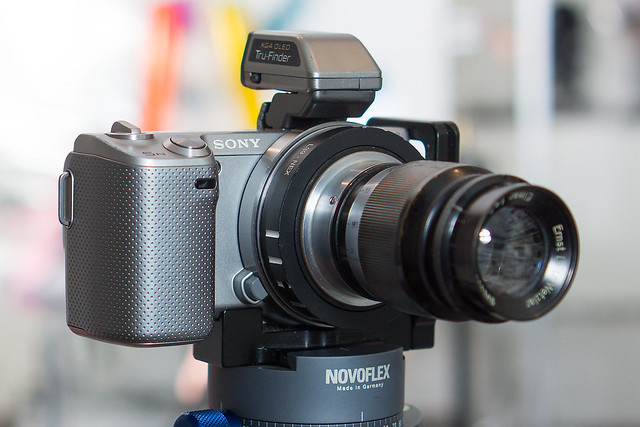

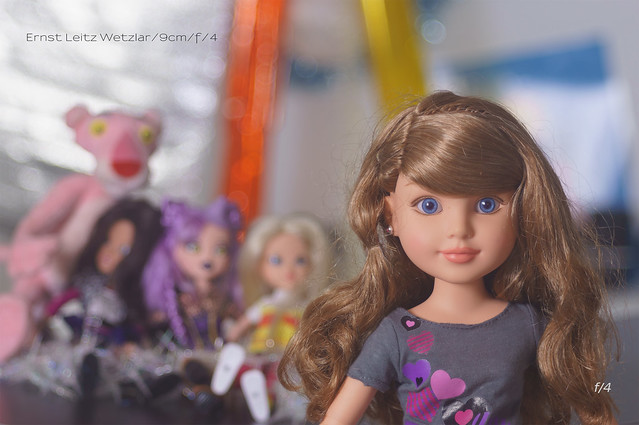
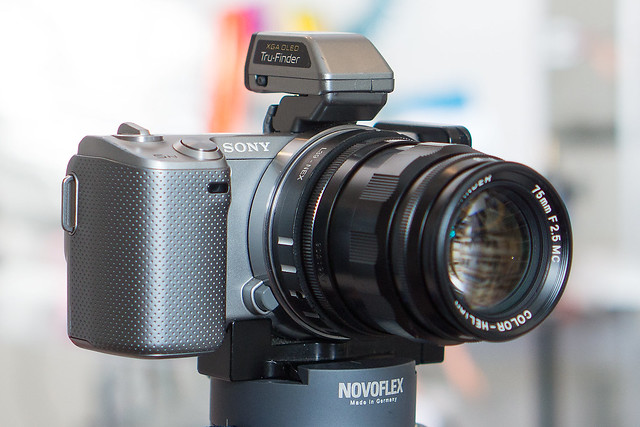




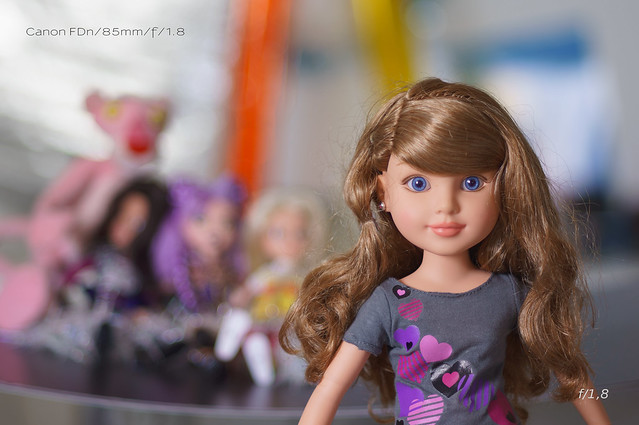
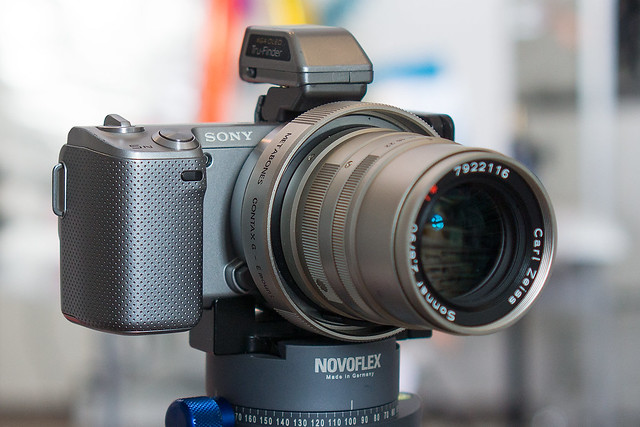







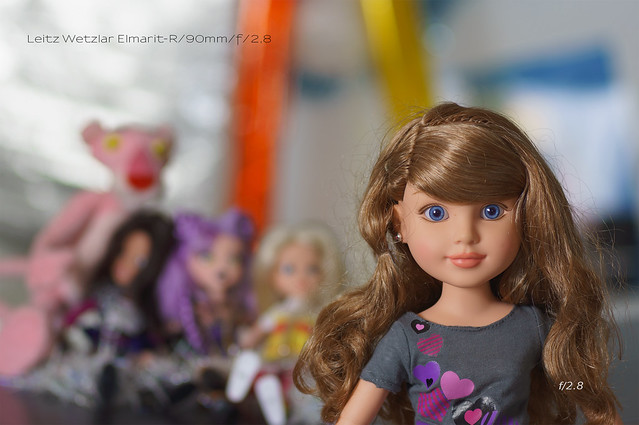
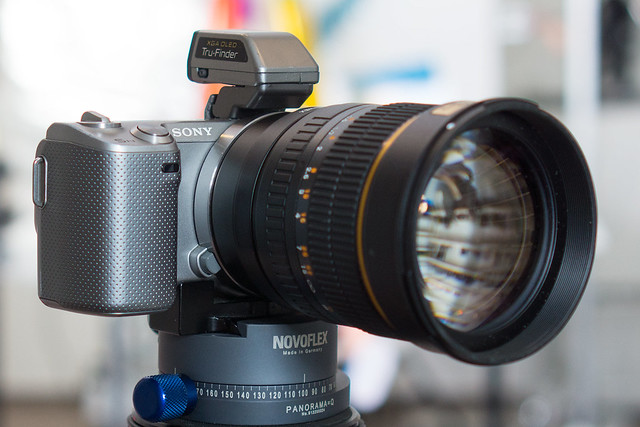

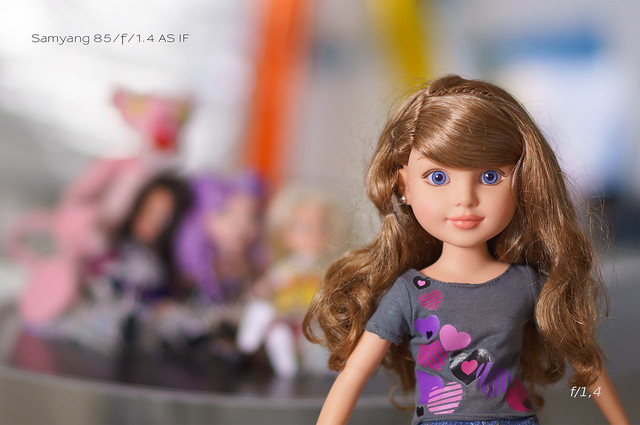
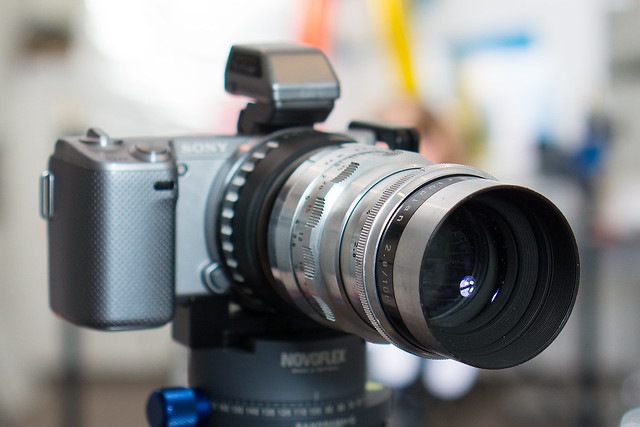

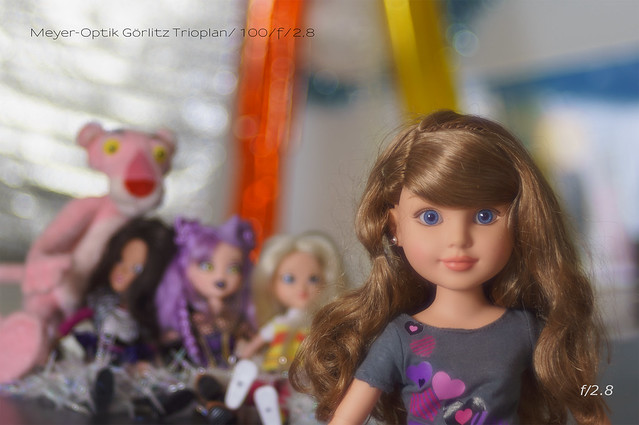
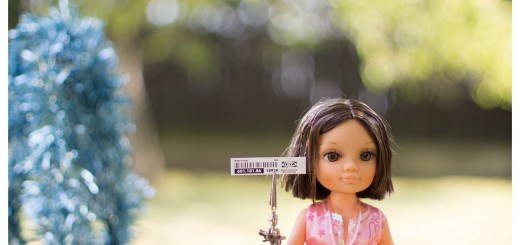
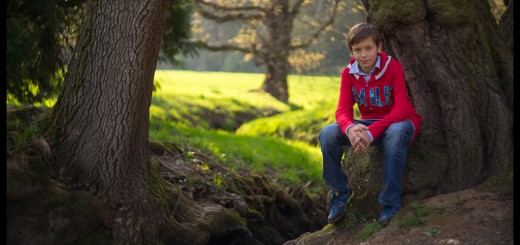
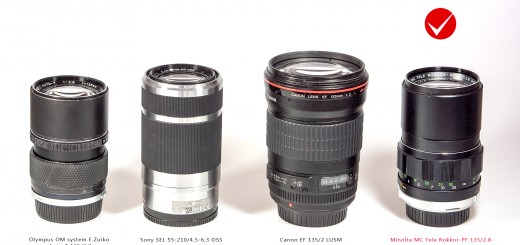













If you get a chance there was a second version of the Leica Elmarit-R 90 that’s much lighter, better corrected and almost the same price (people usually can’t tell the difference).
Hi Andrew and thank you for the suggestion. I might try to find one.
Cheers,
Viktor
An interesting and useful comparison; especially since I’ve been looking for a portrait lens to my liking. I haven’t found it yet. What I want is something that gives a rendition similar to an old Leica Summicron 50mm. The Elmar 90mm doesn’t have it, because it’s a triplet, not a double-gaussian. Same goes for a 90mm Summicron-R preaspherical. The rendition of each actually looks pretty bad to me. I have the Voigtlander 75mm, and I find it to be Ok, nothing special. After thinking, reading, reviewing, and comparing, I now know, unfortunately, what I need: 75mm Summilux.
The 80mm Summilux-R is somewhat bigger, but performs better optically than the m-version (although not by far) according to Erwin Puts’ Leica lens compendium.
The focal lenght should be more ideal for portraits too, especially is you want to complement a 50mm. I find the rendering much more similar to the noctilux pre-aspherical than the summicron; maybe mostly because of the virtualy identical depth of field wide open (the summilux actually being a tad shallower than the noctilux).
The 75mm is also a gorgeous lens however, and more portable, so if you shoot a Leica m the choice should be given.
Double gaussian would be a Biotar….$1200 to $4000 at today rates.